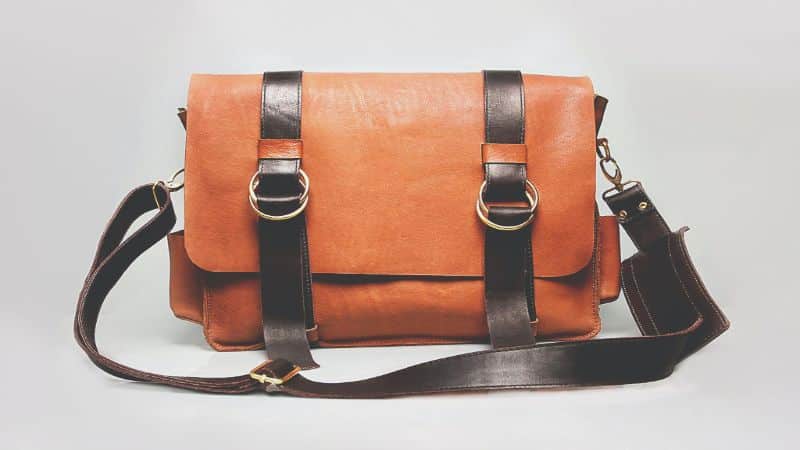Ever wondered why some handbags seem to last forever while others give out after just a few months? It’s not just about how much you’re willing to spend; it’s also about what you’re buying and how you’re using it.

The lifespan of your favorite accessory can vary widely, and it’s influenced by a mix of factors from material quality to brand reputation. Knowing what to look out for can save you both time and money in the long run.
Factors that Influence the Lifespan of Handbags
When you’re eyeing that elegant handbag, knowing what impacts its durability is as essential as admiring its design. It’s not just the price tag that counts.
Material Matters
First up, material is key. Leather stands the test of time, aging gracefully with a patina that adds character. However, not all leathers are equal. Full-grain leather tops the list for longevity, while genuine leather needs more care. In contrast, synthetic materials may cost less but can deteriorate faster.
Craftsmanship Counts
Next, consider the craftsmanship. Quality stitching and hardware mean fewer repairs down the road. Look closely at:
- Stitch lengths: Consistency matters.
- Zippers: Metal ones outlast plastic.
- Lining: If it’s flimsy, it’ll likely rip.
Brand Reputation
Brands with a legacy often maintain high standards in materials and construction. They’re not just selling a bag; they’re offering a lasting piece of their story.
Maintenance and Use
How you handle your handbag also influences its lifespan. Consider:
- Storage: Keep it stuffed to maintain shape.
- Cleaning: Regular, gentle cleaning goes a long way.
- Use: Be mindful of overloading to avoid strain.
Brands might promise durability, but your habits play a pivotal role.
Environmental Factors
Lastly, don’t overlook the effects of the environment. Constant exposure to sunlight or moisture can warp or fade even the most expensive handbags. Keeping your accessory in a temperate, dry place preserves its looks and functionality.
Understanding these factors won’t just help you make a more informed purchase; it’ll guide you in keeping your handbag by your side, for years to come.
Material Quality Makes a Difference
When you’re investing in a handbag, the material it’s made from should be one of your top concerns. High-quality materials are often more durable, resistant to wear, and can handle everyday stresses better than their cheaper counterparts. Think of it this way: a designer bag crafted from premium leather is more likely to withstand the test of time than a faux leather purse from a fast-fashion outlet.
Leather bags, especially those with full-grain or top-grain leather, age gracefully, acquiring a patina that adds character as years pass. On the flip side, materials like canvas, nylon, and vegan leather offer varying degrees of durability and may require different levels of maintenance.
Here’s a quick breakdown of common handbag materials and their typical longevity:
- Full-Grain Leather: Develops patina, high resistance to wear, lasts decades with proper care.
- Top-Grain Leather: More processed, still durable, often used in luxury bags.
- Genuine Leather: Lower quality, but can last a few years with good maintenance.
- Canvas: Durable and washable, prone to fading over time.
- Nylon: Lightweight, resistant to tears, often used in casual or travel bags.
- Vegan Leather: Can vary widely, some high-quality options mimic real leather’s durability.
If you venture into exotic leathers, like snakeskin or crocodile, you’re dealing with materials that need specialized care to maintain their unique textures and finishes.
One thing’s clear: the material of your handbag doesn’t just dictate its appearance and feel—it directly impacts how long the bag will remain by your side. When picking out your next handbag, take a moment to consider what it’s made of and how that aligns with your lifestyle and the longevity you expect. With a discerning eye, you’ll find a companion that not only suits your style but also promises many years of use.
The Importance of Brand Reputation
When you’re bag shopping, the reputation of the brand can be as crucial as the material of the bag itself. Well-established brands often equate to trust in durability and design quality. They’ve got reputations to maintain, which means cutting corners could hurt their image and their bottom line.
You might be thinking, does a logo really signify a longer lifespan for your handbag? In many cases, yes. These brands invest heavily in research and development, ensuring their products not only look good but last long too.
Take a look at the big names in the industry, and you’ll notice consistent product quality over the years. They use expert craftsmanship, enhanced by quality control processes that lesser-known brands may not prioritize.
Here’s another thing to consider: customer service. Top-tier brands often provide excellent aftercare for their products. If something goes wrong, you’re more likely to get the issue resolved without a headache. That adds years to your handbag’s functional life, in a sense.
« Protect Handbag From Color Transfer: Keep Your Purse Pristine With These Tips
How Long Does a Handbag Last? Maximize Durability with These Tips »
Remember, though, brand reputation doesn’t always guarantee longevity, but it’s a solid indicator of a product made with care and designed to endure. When selecting your next handbag, factor in the brand’s history. Are they known for timeless pieces that withstand the tide of trends?
On the flip side, brands riding the wave of fast fashion may offer the latest styles at attractive prices, but these bags may not hold up as well over time. They often sacrifice material and construction quality to keep costs low, aiming for quick turnarounds and trend-focus rather than longevity.
Savvy shoppers like you should always be on the lookout for reliable reviews and real-world tests. These nuggets of information can reveal a lot about how a handbag might hold up in your daily life.
Choosing the Right Style and Construction
When picking a handbag, think beyond just aesthetics. Style and construction heavily influence longevity. Let’s tackle style first. Simple, timeless designs typically outlast trends. If you’re looking for a bag that will stay in fashion for years, opt for a classic shape and color. It’s not just a matter of taste; it’s a practical choice. Now don’t get me wrong, everyone loves a little flair, but if you want a handbag that lasts, stick with styles that have a proven track record.
Construction, though, is where the rubber meets the road. Stitching should be even and tight, with no loose threads. Give particular attention to the straps and handles; they should feel secure and be well attached to the body of the bag. The lining is another area not to overlook. A robust lining material adds to the bag’s structure and durability. Be wary of flimsy linings that could tear or wear out quickly.
Hardware is another critical component. Zippers, clasps, and metal rings should all be made of quality materials. Poor hardware can break easily and render a bag practically useless. Always test zippers and clasps before buying to ensure they operate smoothly.
Consider the reinforcement of corners and edges. Bags that have these areas reinforced tend to hold their shape better and withstand wear and tear. Without proper reinforcement, these areas can become the first to show signs of damage.
In short, you’re looking for a handbag that feels as sturdy as it looks. Don’t be swayed by a pretty facade; a bag that’s built well, with attention to detail, is the one that’ll stay by your side season after season.
Taking Care of Your Handbag
Proper maintenance can significantly extend your handbag’s lifespan. Regular cleaning is paramount. Wipe down leather bags with a damp cloth and use specialized cleaners for stains. For fabric handbags, use gentle soap and water. Always air-dry your bag away from direct heat to prevent warping and fading.
Be mindful of storage. Stuff your handbag with bubble wrap or tissue paper to retain its shape and store it in a dust bag or pillowcase. If your handbag isn’t in use, keep it in an upright position in a cool, dry place. Avoid hanging it by the straps, which can stretch them out and compromise the bag’s structure.
Pay attention to everyday use. Be conscious of what you’re placing inside—overloading can strain the straps and seams. Minimize exposure to direct sunlight, extreme temperatures, and moisture which can damage the material over time.
Rotation is key. Don’t wear the same handbag daily. Rotating between different bags prevents premature wear and tear. This will allow time for the materials to rest and regain their natural shape.
For exotic leathers, consider professional servicing for deep cleaning and conditioning. Professionals can handle tough stains and maintain the leather’s quality. Simple DIY cleaning kits are available, but they’re not a substitute for expert care when needed.
Address repairs quickly. Whether it’s a loose thread, a broken zipper, or a worn handle, promptly taking your handbag for repair can prevent further damage. Find a reputable cobble or leather specialist who understands luxury handbags for best results.
By investing in regular care and maintenance, you’ll ensure that your handbag remains in top-notch condition for the longest possible time. Remember, a little effort goes a long way in preserving the value and aesthetics of your cherished accessory.
Conclusion
So there you have it—you’re now equipped with the knowledge to keep your favorite handbag by your side for years to come. Remember, the secret to longevity lies in choosing quality materials, opting for reputable brands, and paying close attention to construction. Don’t forget that a little TLC goes a long way. By caring for your handbag and addressing repairs quickly, you’re not just maintaining a stylish accessory; you’re investing in a piece that could stand the test of time. Go ahead and give your handbag the love it deserves, and it’ll surely return the favor.
Frequently Asked Questions
What determines the lifespan of a handbag?
The lifespan of a handbag is determined by the quality of its material, brand reputation, style and construction, and maintenance. High-quality materials, reputable brands, timeless styles, and regular care can extend the longevity of a handbag.
How does the material of a handbag affect its durability?
The material of a handbag significantly impacts its durability. Premium leather and other high-quality materials are more resistant to everyday wear and tear compared to cheaper alternatives, resulting in a longer-lasting handbag.
Do brand reputations matter when choosing a handbag?
Yes, brand reputation matters as established brands typically invest in quality materials and construction, offering more durable products. Conversely, fast fashion brands may prioritize trends over longevity, resulting in less durable bags.
Why is construction important for the longevity of a handbag?
The construction of a handbag, including even stitches, secure handles, robust lining, quality hardware, and reinforced corners, ensures that the bag can withstand regular use and last longer.
Can proper maintenance actually extend the life of a handbag?
Absolutely. Regular cleaning, appropriate storage, and minimizing exposure to harmful elements, as well as professional servicing for exotic leathers, can significantly extend a handbag’s life.
Should I avoid certain handbag styles to ensure they last longer?
Choosing simple, timeless designs can be beneficial as they have a proven track record of staying in style and typically feature more durable construction. Trendy, intricate designs may not be as long-lasting.
Is it helpful to rotate between different handbags?
Rotating between different handbags can prevent premature wear and tear by distributing usage, which helps in keeping each handbag in good condition for a longer period.










